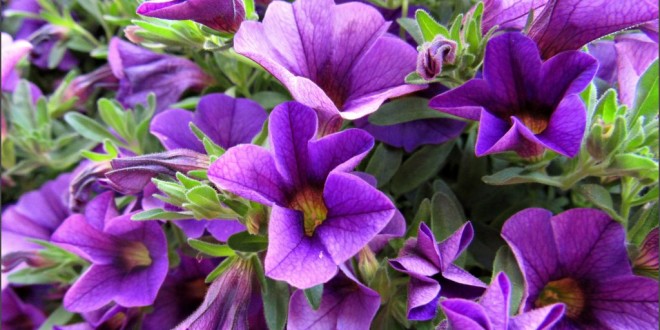Formerly known as million bells, calibrachoa is an easy to grow, low-maintenance plant that displays masses of bell-shaped, petunia-like blooms from spring until the first light frost. The blooms cover long, cascading branches that make the plant ideal for containers or hanging baskets. Sun-loving calibrachoa reaches heights of 6 to 10 inches and displays a rainbow of bright colors, depending on the variety. Although calibrachoa is often grown as an annual, it is perennial in U.S. Department of Agriculture growing zones 9 through 11.
Calibrachoa is self-cleaning and requires no deadheading.
Most gardeners prefer to grow calibrachoa in containers; however, the plant is suitable for growing in the ground if the soil drains well. In the ground, the plants require very little supplemental water.
Calibrachoa is a good choice for a hummingbird of butterfly garden.
Water calibrachoa generously, soaking the soil around the roots, and then don’t water again until the top 1 to 2 inches of soil feel dry. Calibrachoa is relatively drought-tolerant and prone to rot in soggy soil. Watering the soil instead of the foliage also helps prevent rot.
Add a slow-release fertilizer to the soil at planting time. Thereafter, feed the plant monthly, using a water-soluble fertilizer with a ratio such as 20-10-20. Always water immediately after applying fertilizer.
Trim the plant in midsummer or anytime calibrachoa begins to look tired and less vibrant. Calibroacha isn’t fussy and is safely trimmed back to the point where it looks neat and tidy. Blooming decreases for a few days but rebounds quickly as trimming the plant stimulates new growth.
Things You Will Need
Slow-release fertilizer
20-10-20, water-soluble fertilizer
Garden pruners or scissors
Tip








